What Are LED Lights? How to Use Them On Set In 2021
AN IN-DEPTH ANALYSIS OF LED LIGHTS AND THE REVOLUTION OF LIGHTING.
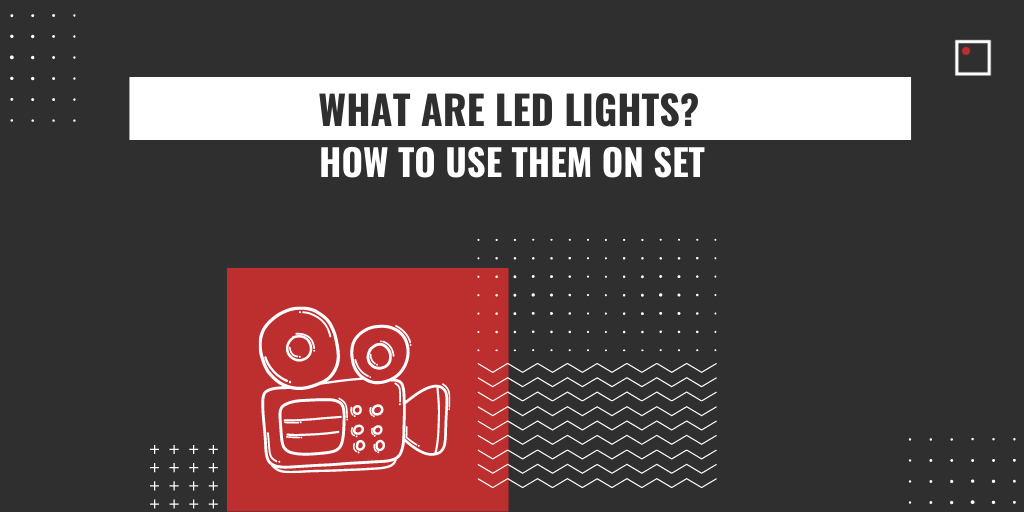
Written by Devan Scott
There’s a revolution going on in the world of lighting! For decades, film lighting has involved using some combination of halogen, incandescent, HMI, and fluorescent sources. Nowadays, all of this is changing and fast: LEDs, or Light Emitting Diodes, are radically altering how we shoot our movies. They’re safer, cooler, use less energy, and open up a whole ton of exciting new possibilities for how we light our movies.
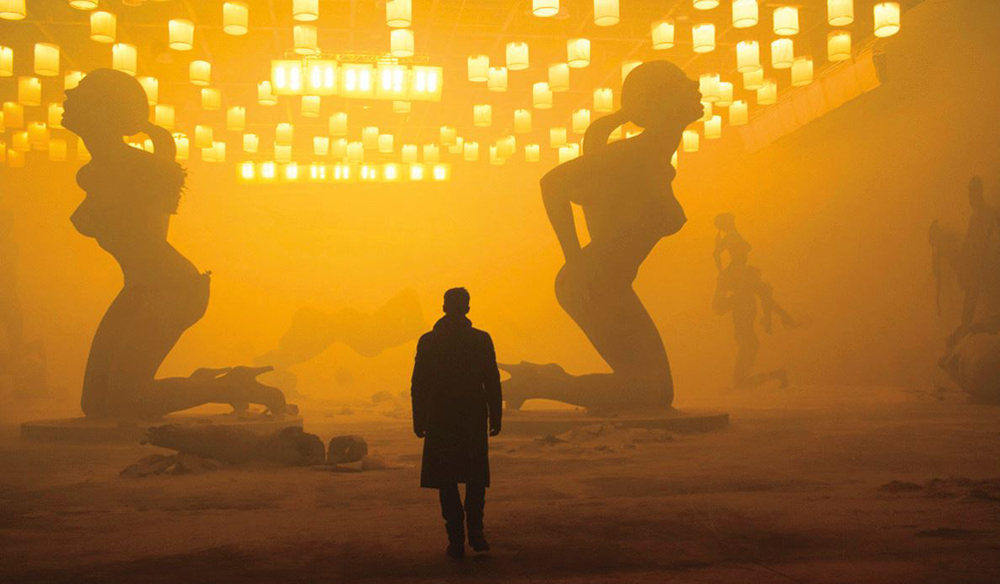
Arri Skypanels in the set of Blade Runner 2049
What does it mean for you, the indie filmmaker? Let’s start by looking at the types of LED fixtures commonly available on the market today and how you can use them to make your films look wonderful.
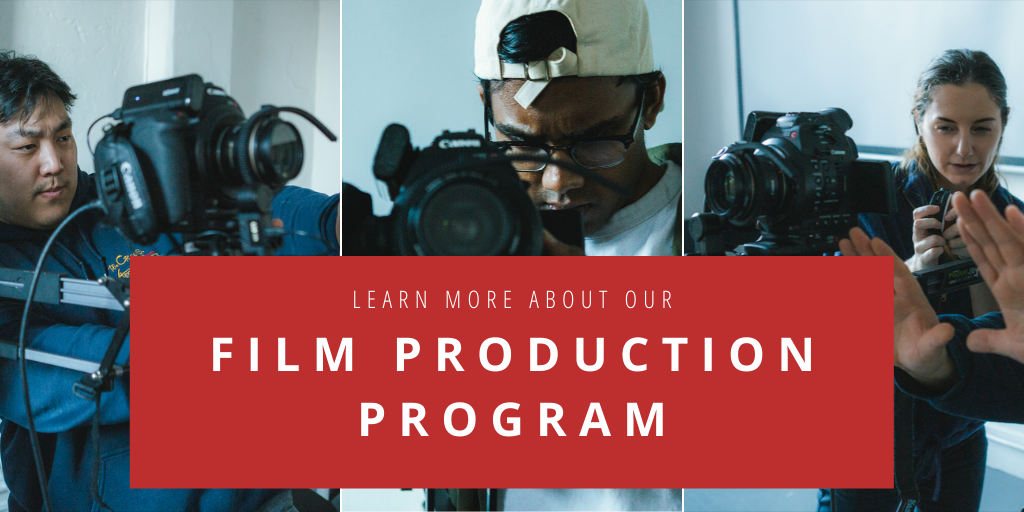
Click here to learn more about InFocus Film School’s Writing for Film and Television Program!
Types Of LED Fixtures
Panels
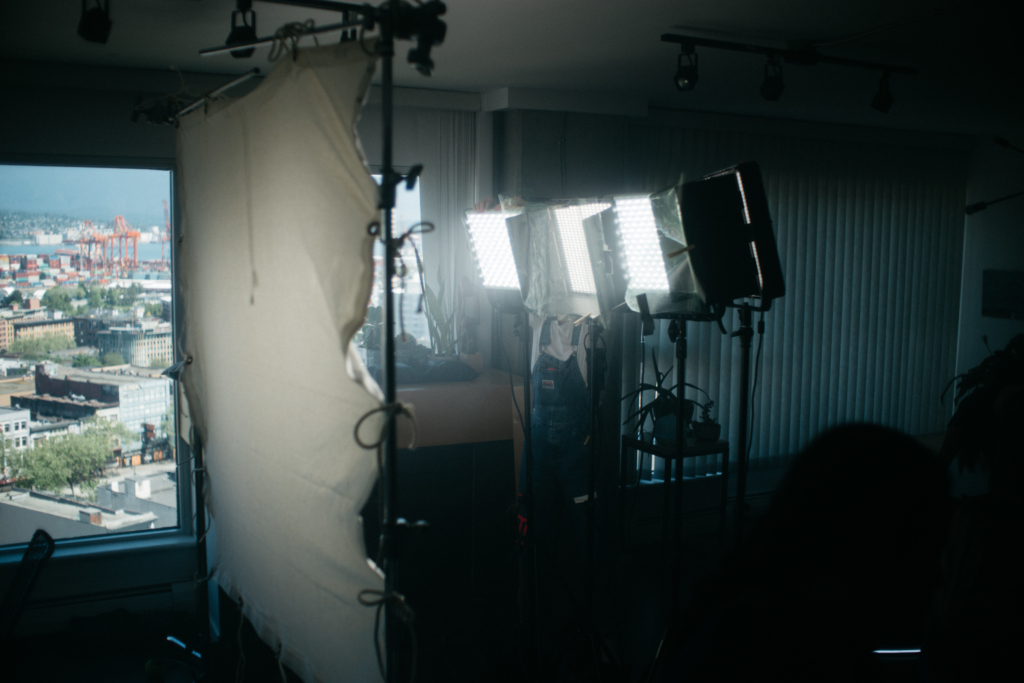
Widespread and affordable, an LED panel is an array of individual LEDs that form a single soft source. These are available from dozens of brands from affordable prosumer models to high-end Arri Skypanels. Newer generations of LED panels, such as those by LiteMat, are ultra-thin and flexible, allowing you to easily place large and soft LED sources in small spaces.
Tubes
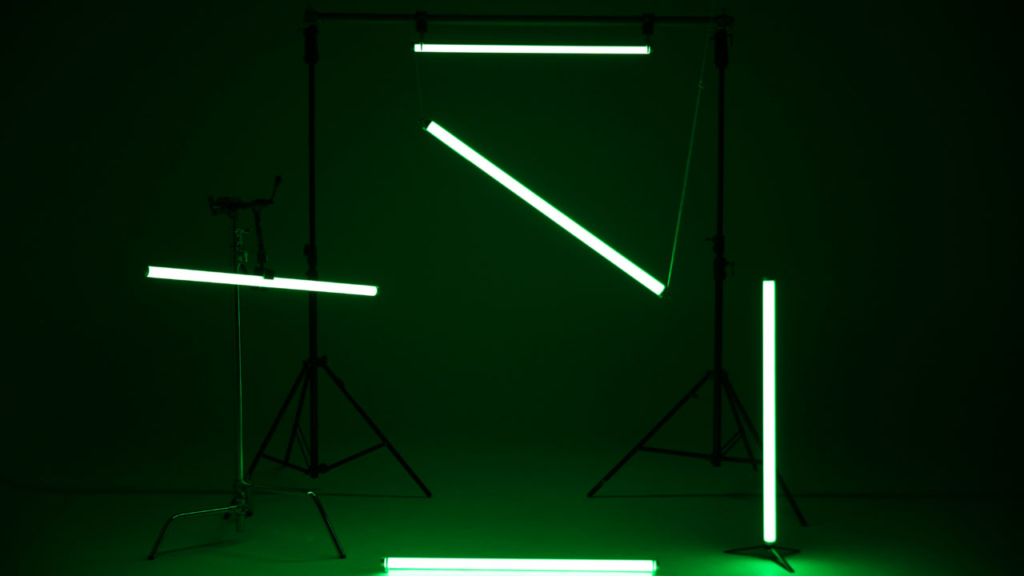
A row of LEDs placed inside a diffusion tube, these resemble fluorescent tubes. Common brands include Quasar and Astera.
Fresnels
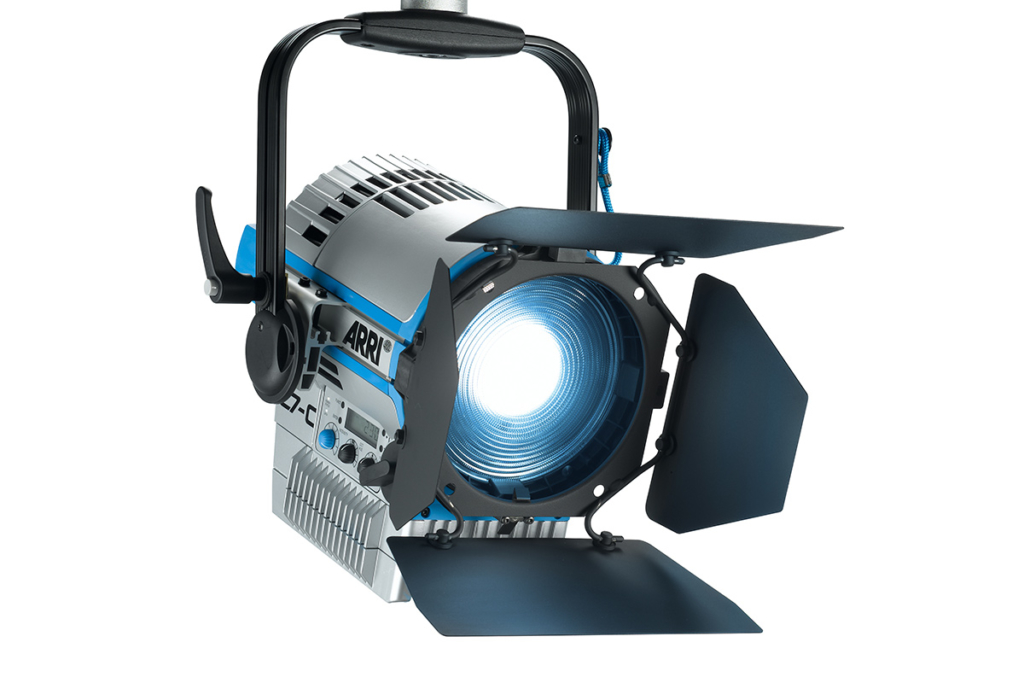
For years, one of the drawbacks of LED lighting was the lack of directional fresnel-style options, but that has changed. LED fresnels – which generate a focused beam of light – are now commonplace, and they run significantly cooler than their Halogen or HMI predecessors.
Practicals
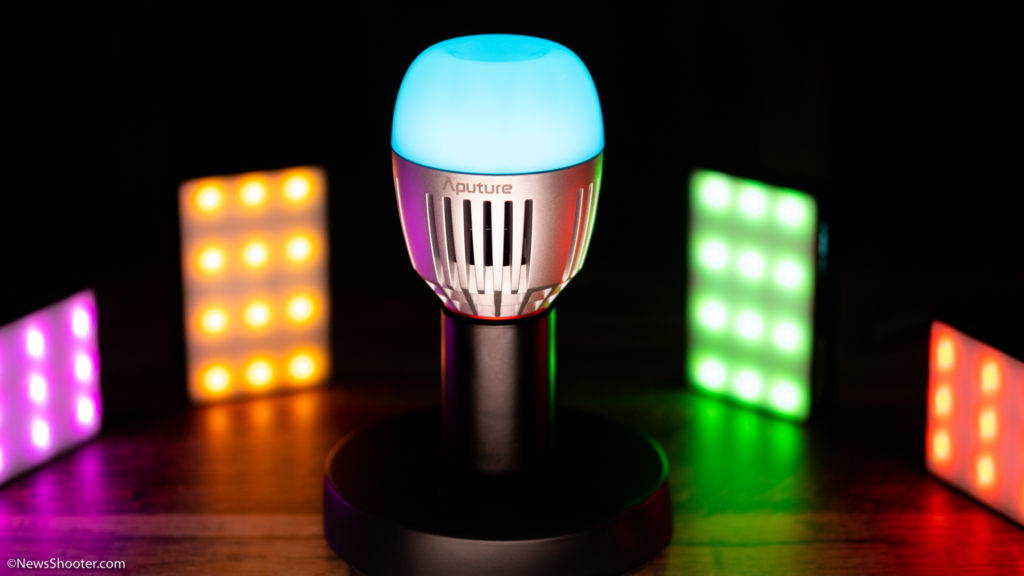 Many LED manufacturers have added practical replacement bulbs to their lineups, allowing you to replace standard 25-100w bulbs with fully remote-controlled RGB equivalents.
Many LED manufacturers have added practical replacement bulbs to their lineups, allowing you to replace standard 25-100w bulbs with fully remote-controlled RGB equivalents.
Modular Fixtures
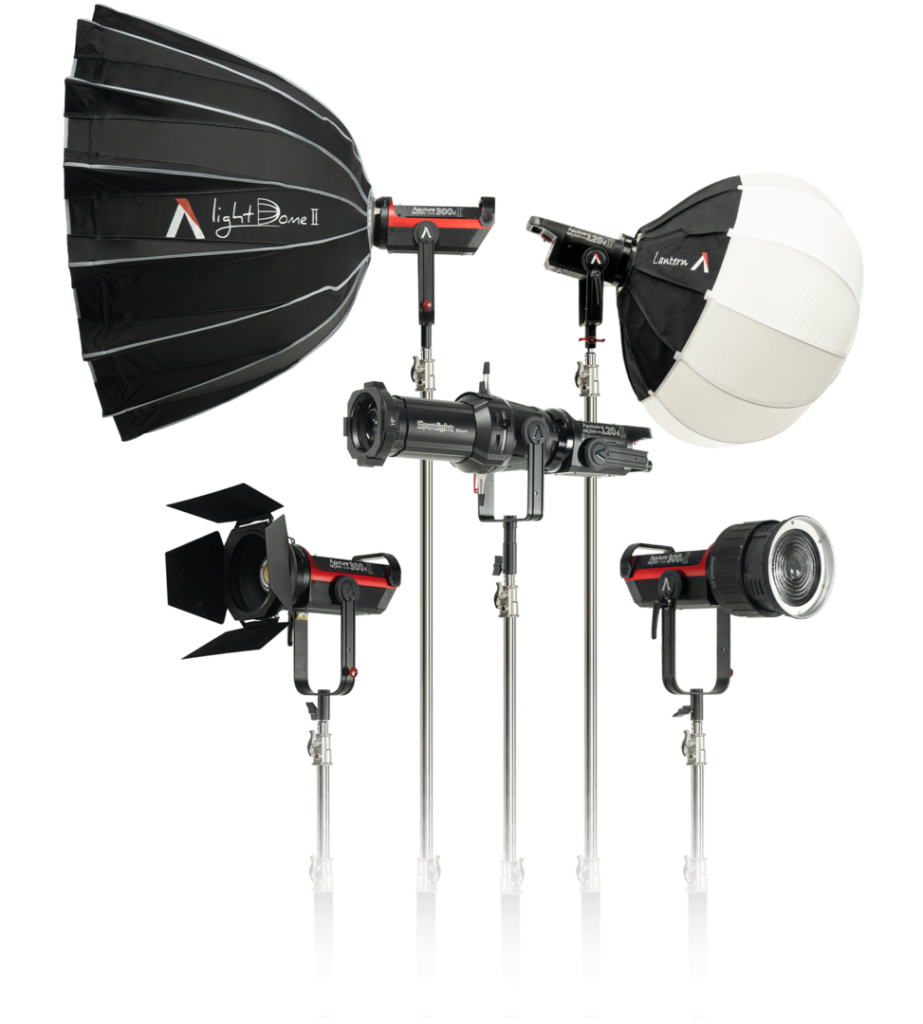
Fixtures such as the Aputure 300D are designed with flexibility in mind – they can act as softboxes, directional sources, or floodlights.
5 Reasons to Use LED Lights
1. Do away with gels by using RGB LEDs!
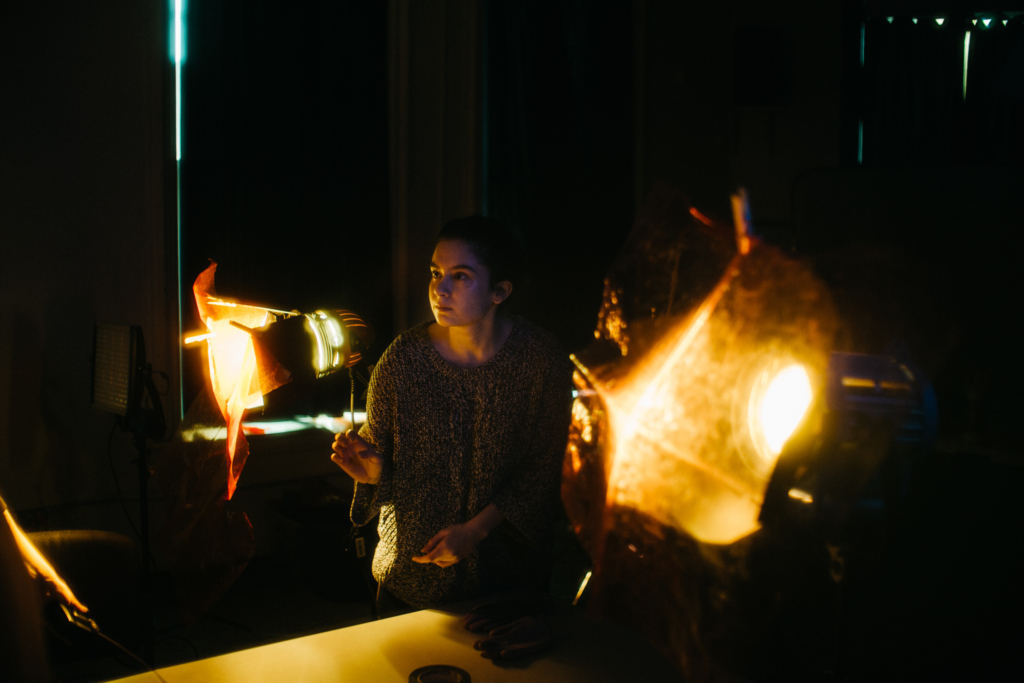
Traditional light fixtures with colour gels.
Traditional light fixtures generally default to one of two colours: tungsten and daylight. Tungsten sources look like standard ‘warm’ household bulbs; daylight sources are designed to match, as the name would imply, the sun’s colour temperature. Any other colour of lighting had to be achieved with multicoloured gels, and, in addition to being expensive, have always been something of a headache on small sets.

RGB LED Tubes
Many modern LED lights, known as RGB LEDs, are able to display just about any colour on the visual spectrum without the aid of gels. As a result, the same lighting unit can now be used to match the colour of lighting in just about any situation: need a daylight figure that can be used to imitate candlelight at night? The same light can now do both without the need of any modifiers. Need to light the foreground and background of a scene differently? Have you just had a last-minute burst of inspiration that’s convinced you to use green backlight? Now, all you need to do is flip the switch on an app. No hassle.
2. App Control means instant wireless results
Speaking of apps, many of these new fixtures can now be controlled remotely via your phone, and the possibilities are endless. For example, you can program Astera’s line of LED tubes in a multiple of ways. You can simulate everything from firelight to raves to lightning storms and much more. Complex lighting setups that would have taken days just a decade ago can now be designed and implemented in minutes by a small crew.
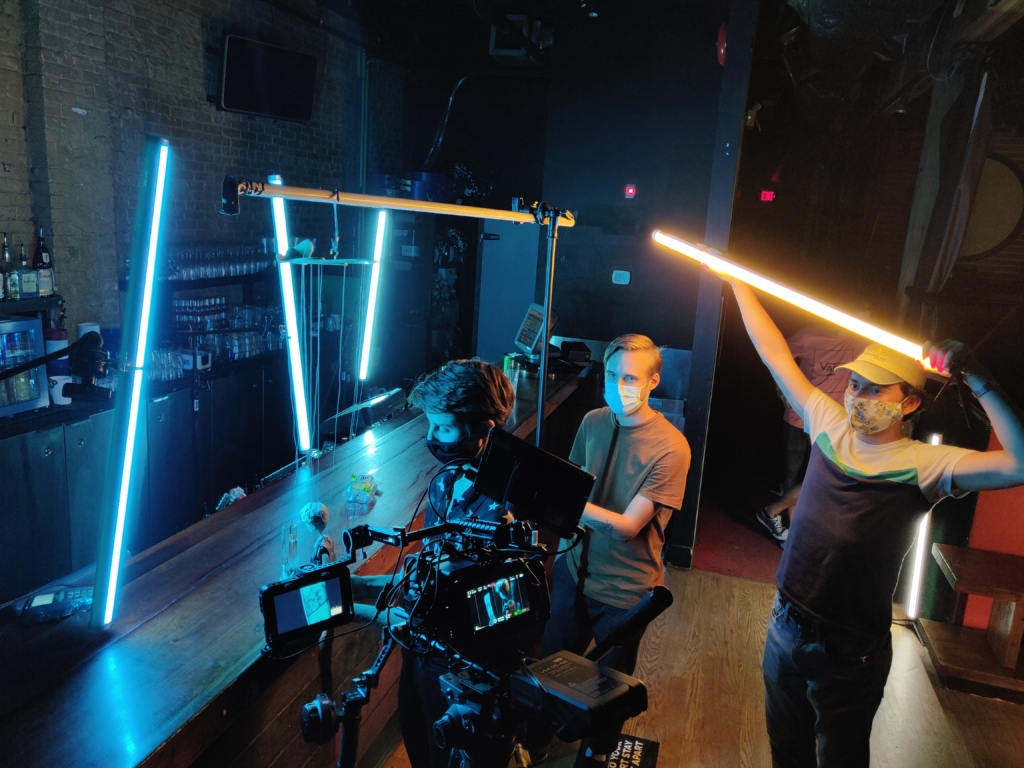
“Shock” BTS
3. Hide Miniature LEDs to augment your practical sources
Practical sources – light sources that are visible onscreen such as lamps and screens – are perhaps my favourite way to motivate lighting. They’re a great way to unite your production design and lighting to create a believable onscreen world where the lighting feels like a natural part of the scene. However, you must augment these sources in some way. 60 watt household bulbs and dim laptop screens don’t exactly put out much in the way of light when it comes to a camera’s sensor!
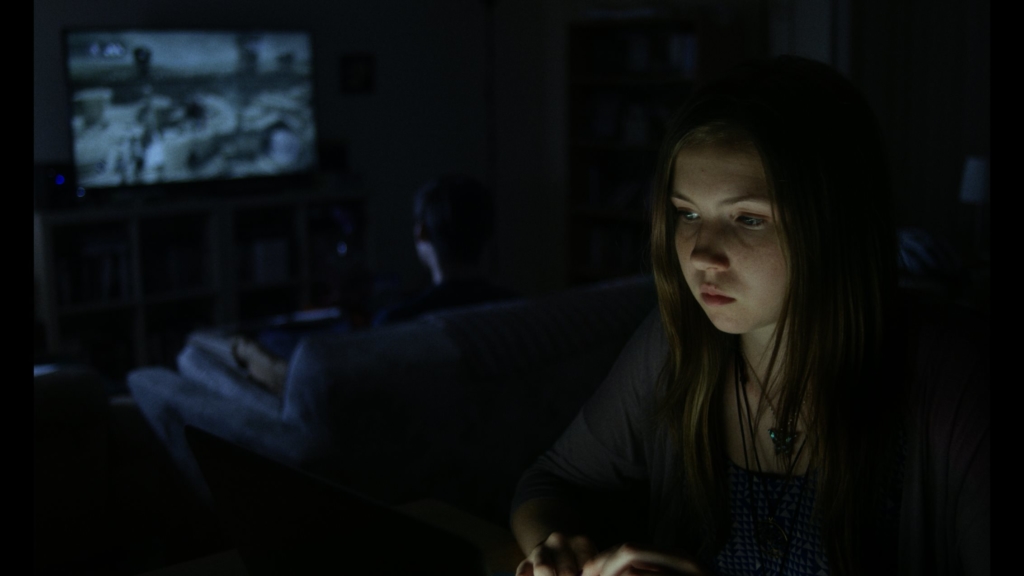
Shot from LA Cartographe w/ laptop extended
Small, battery-powered LED panels and tubes have, luckily, made this process much easier in recent years. In the past, to light a scene light the one above, I might have hid a fixture off-camera behind the table. This would have punched up the lighting on the main character, but it would sacrifice believability; the audience can, whether they realize it or not, subconsciously tell that something is off about a light source that’s significantly brighter and farther away passing for a small screen inches from our subject’s face.
Instead, we lit this scene with a small LED tube placed on the keyboard – it more than quadrupled the amount of light coming from the ‘screen’, and the result was a shot that felt far more believable than it would have otherwise.
4. Light with “Windows”
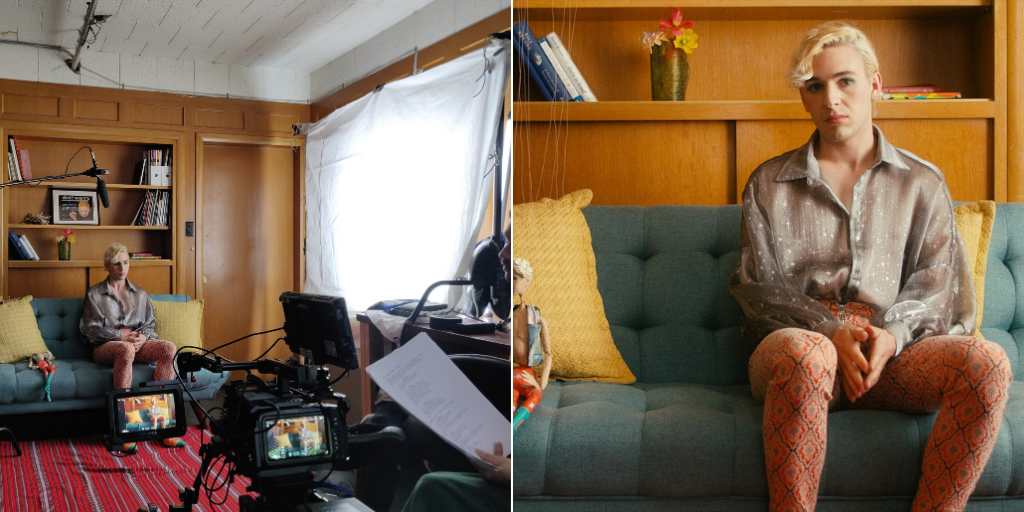
“Fingertips” BTS vs on-screen
When lighting daylight interiors on location, space has always been of great concern. Folks often ask me whether I prefer to bounce or diffuse light to augment windows. To their surprise, my answer has nothing to do with aesthetics. I generally use whichever I can feasibly fit in the space I’m shooting. If one is trying to fool an audience into believing your fake lighting is in fact real sunlight, that light needs to be rather large and as far away as possible. The mechanics of bouncing fixtures off of fabrics or diffusing lights through grids is hugely limiting in this way; these riggings can take up a huge amount of valuable space on small sets.
This, too, has shifted thanks to thin, flexible, and large sources like LiteMat’s series of ultra-thin LED panels. They are, essentially, a wall of light; they can be affixed to a wall or a ceiling, accomplishing what a standard diffusion setup can without the need of any extra riggings. You can use LED to dramatically decrease the footprint of your soft sources in this way.
Read more about lighting with windows.
5. Battery Power Means Lighting Anywhere
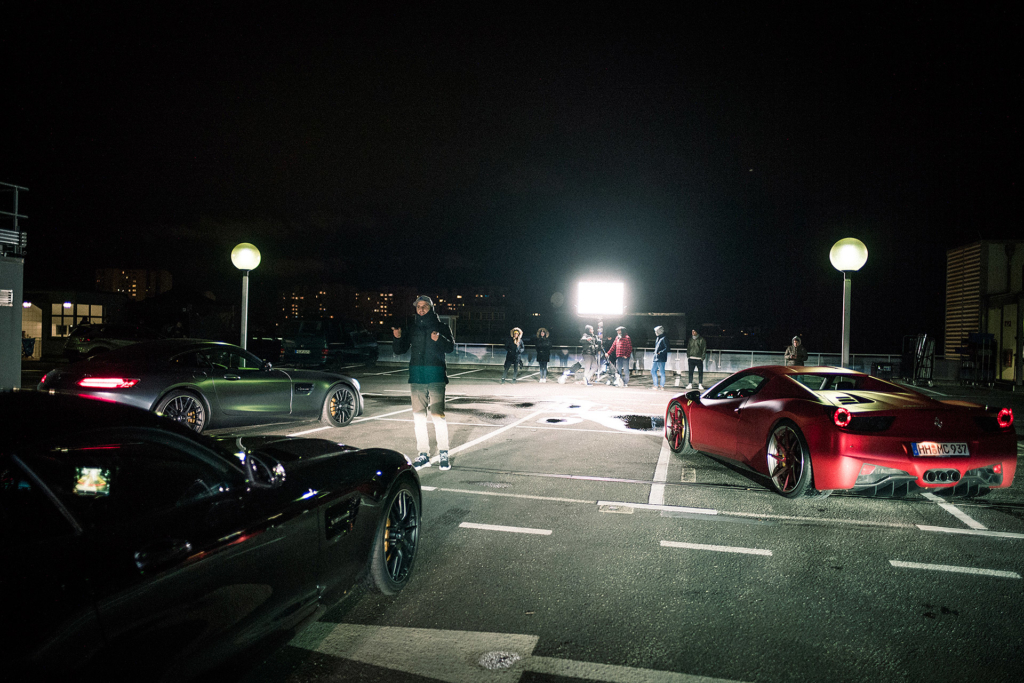
Power has always been a major issue on outdoor location shoots. Want to light a night exterior? Better bring a generator. A big one. At least 3,000 watts worth, and even that’s cutting it close.
In contrast, it’s now possible to light sizeable outdoor nighttime exteriors exlusively with battery-powered sources. Even the 420-watt Arri Skypanel S60 can be run with two V-Mount batteries, and the implications for everything from low-budget narrative to location documentary shoots are endless.
In conclusion, the digital revolution in lighting has had much the same effect as the digital revolution in cameras: democratization of the production process. These new technologies have made it possible for independent filmmakers to achieve ever-more ambitious visuals with ever-smaller budgets and crews. They’ve also made it possible for alternative and unique visual styles to flourish; just as we’re no longer bound to traditional studio fixtures, we’re no longer bound to traditional lighting methodologies.





